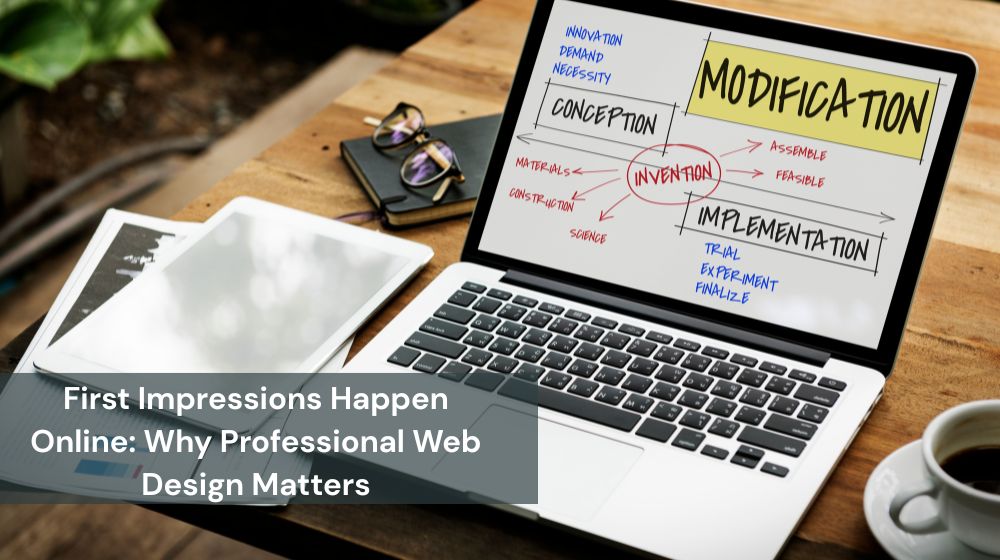In today’s digital landscape, professional web design plays a pivotal role in the success of businesses. Beyond simply having an online presence, creating an engaging and user-friendly website is a fundamental element that defines a brand’s image in the digital world. In this article, part of the Vayes Digital B2B educational series, we will delve into the importance of professional web design and outline the key elements that corporate and professional companies need to consider.
Why Should I Invest in Professional Web Design?
If you’re looking to sell online or attract potential customers, it’s crucial to remember that users typically make their decisions within the first few seconds of visiting a website.
But how is this decision formed?
This decision is influenced by the design of the website, loading speed, and the overall user experience. No one will make a purchase or share their information on a site they don’t like, right? Professional web design optimizes this experience, ensuring that users stay on your site longer and complete the desired actions (purchasing, signing up, filling out forms, etc.).

Key Elements to Consider in Web Design
-
User Experience (UX) and User Interface (UI) A successful website heavily relies on user experience (UX) and user interface (UI). Users should be able to navigate your site effortlessly, find the information they need quickly, and enjoy a seamless experience. A well-designed UX keeps users on your site longer, while an aesthetically pleasing UI makes the site visually attractive.
-
Mobile-Friendly Design With a significant portion of internet traffic coming from mobile devices, mobile-friendly web design is a must. Also known as responsive design, this approach ensures that your site displays perfectly on any device (smartphone, tablet, desktop).
-
Fast Loading Speed Users have short attention spans, and a slow-loading website can cause them to leave. Web page speed optimization is essential for successful web design. Techniques such as image optimization, caching strategies, and lightweight code can significantly improve site speed.
-
SEO-Friendly Design Search engine optimization (SEO) is a strategic approach that helps your website rank higher in organic search results. An SEO-friendly web design makes it easier for search engines to crawl and index your site. Proper keyword usage, SEO-friendly URL structures, and sitemap creation are all part of this process.
-
Visual Design and Brand Identity The aesthetic aspect of web design creates the first impression on users. Visual elements such as color palettes, logos, typography, and other design components that reflect your brand identity help portray a professional and trustworthy image. Additionally, design principles like visual hierarchy and whitespace are critical for directing user attention to the right areas.
-
Content Management System (CMS) The success of a website is directly related to the ease of content management. Content management systems (CMS) allow you to quickly and easily update your website’s content. Popular CMS platforms like WordPress, Joomla, and Drupal are preferred for their ease of use and wide range of plugins.
-
Security Security is especially crucial for e-commerce sites. SSL certificates, firewalls, and regular security updates are fundamental steps to ensure your site’s security and protect user data.
Benefits of Professional Web Design
-
Higher Conversion Rates: A well-designed website meets users’ needs quickly and effectively, leading to higher conversion rates. Professional web design supports key business goals such as sales and customer acquisition.
-
Strong Brand Image: A professional website is your brand’s face in the digital world. It enhances users’ trust in your brand and sets you apart from your competitors.
-
Higher Search Engine Rankings: An SEO-friendly web design helps your site rank higher in search engines, increasing your organic traffic and helping you reach more potential customers.
-
Better User Engagement: An effective user experience and eye-catching design make it easier for visitors to interact with your site. This not only increases the time users spend on your site but also leads to other digital interactions, such as social media sharing.
Conclusion: Tips for Success in Professional Web Design
In conclusion, professional web design is the cornerstone of building a successful digital presence. A website that excels both visually and technically can drive business growth and establish a strong digital presence. It is essential to focus on user experience, mobile compatibility, speed, and SEO throughout this process.
If you’re interested in learning more about how to increase traffic to your website, click here.


